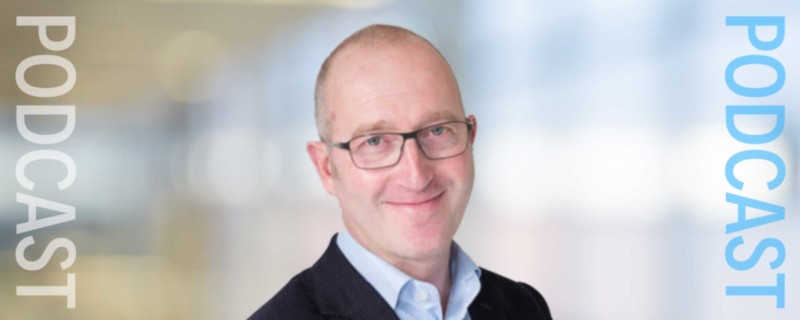
Smart Cell Culture Monitoring – Transforming the way we look at cells in culture
Podcast: Download (Duration: 17:34 — 24.2MB)
Subscribe Here: Apple Podcasts | Spotify | RSS | More
Subscribe to the Cell Culture Dish Podcast on: iTunes | Google Play
Show Notes:
We began the interview by discussing some of the challenges that exist in cell culture monitoring and what led Philip to look for new technologies to solve these issues. Mr. Mathuis explained how they entered into a partnership with GSK to improve cell culture monitoring. GSK was looking for a platform to allow online monitoring of cell growth inside of a bioreactor. The goal was to do this without sampling and to be able to look at cell viability, cell density and characterization of the cells while in their culture environment. To eliminate sampling, they would need to be able to see the cells without removing them from culture and provide a way to return them back to the bioreactor in a sterile system. The system also had to provide reproducible results. The Ovizio iLine F was developed to meet these needs and more.
Next, I asked Philip to describe the implementation of Ovizio’s iLine F holographic microscope and how it works to continuously monitor cells. He described that the iLine F, instead of taking a 2D image of a microscopic object, takes a hologram of a microscopic volume. Then for each microscopic object within the volume, it can compute a holographic fingerprint. This fingerprint, based on 59 parameters, can then be used to identify the cell type, whether it is alive or dead and other key parameters.
It is able to monitor continuously because, a submersible probe is inserted into the bioreactor/disposable bag. The probe is disposable, sterile, and autoclavable. The sample is then pumped out and it flows through a reading cartridge where the holographic fingerprint image is taken and a growth curve is graphed automatically. The sample is then returned to bioreactor, thereby completing the closed loop sampling process. This method also has the extra benefit of disposing of sample waste material as cells return to the bioreactor.
I have heard Phillip give presentations in the past and I asked him to retell for our listeners how Ovizio’s holographic fingerprinting cell identification is similar to that of the mobile app Shazam’sTM ability to identify a song. He described that while Shazam is able to take a snip of a song and compare it to its database to find the match, the iLine F is able to do the same by taking the holographic image and matching it to a cell type that exists within its database.
Next we discussed the importance of quality by design and PAT initiatives and how enhanced cell culture monitoring can help with implementation, but the results must be reliable and reproducible. He explained that the iLine F system is integrated within the manufacturing control systems, thus creating both an alert when something is abnormal and also allowing for monitoring of cell parameters in real time. For example, if the iLine F detects something abnormal in the cells an alert is issued through the manufacturing control system, so that operators can then investigate the situation. In addition, the iLineF is continuously tracking cell parameters like viability, density, and morphology, which creates a record of the state of the culture and provides a feedback loop. This allows users to both analyze trends in their culture and ensure continuous quality of manufacturing, thus providing full traceability at single cell level. The iLineF also provides the reproducible results necessary to ensure decisions are being made based on accurate data.
We then talked about other benefits beyond QbD. Philip described how the iLine F was designed to permit scientists to look at cells while they are growing in culture. This is beneficial because it means no sampling or staining of cells, which negatively affects the cells and impacts their health prior to looking at them under the microscope. So with the iLine F you get a more accurate view of what the cells really look like in culture. Also, by automating the cell culture monitoring process, manual sampling, data entry and graphing are all eliminated. This results in greatly reduced operational costs, a reduction in risk of contamination and a decrease in variability.
Another important benefit is the iLine F’s ability to detect cell death 24 hours before traditional methods, which enables optimization of harvest time and of culture processes.
I then asked Philip about common questions that they receive about the iLine F. He said that most importantly, people want to be sure that the system is reproducible, that all monitoring is the same at all steps of scale up. Ovizio has been able to demonstrate that the results are consistent and reproducible at different scales.
People also are interested in what else the system can do and want to see if the system can look at viral content, membrane activity and pre-apoptotic signs so they can intervene. All of these are being worked as future applications.
Lastly, we talked about feedback they get from users of the iLine F. Philip shared that mostly scientists are excited about the fact that this technology allows them to peek inside the bioreactor to see if their cells are happy or not, something that is normally negatively impacted by harvest and staining.